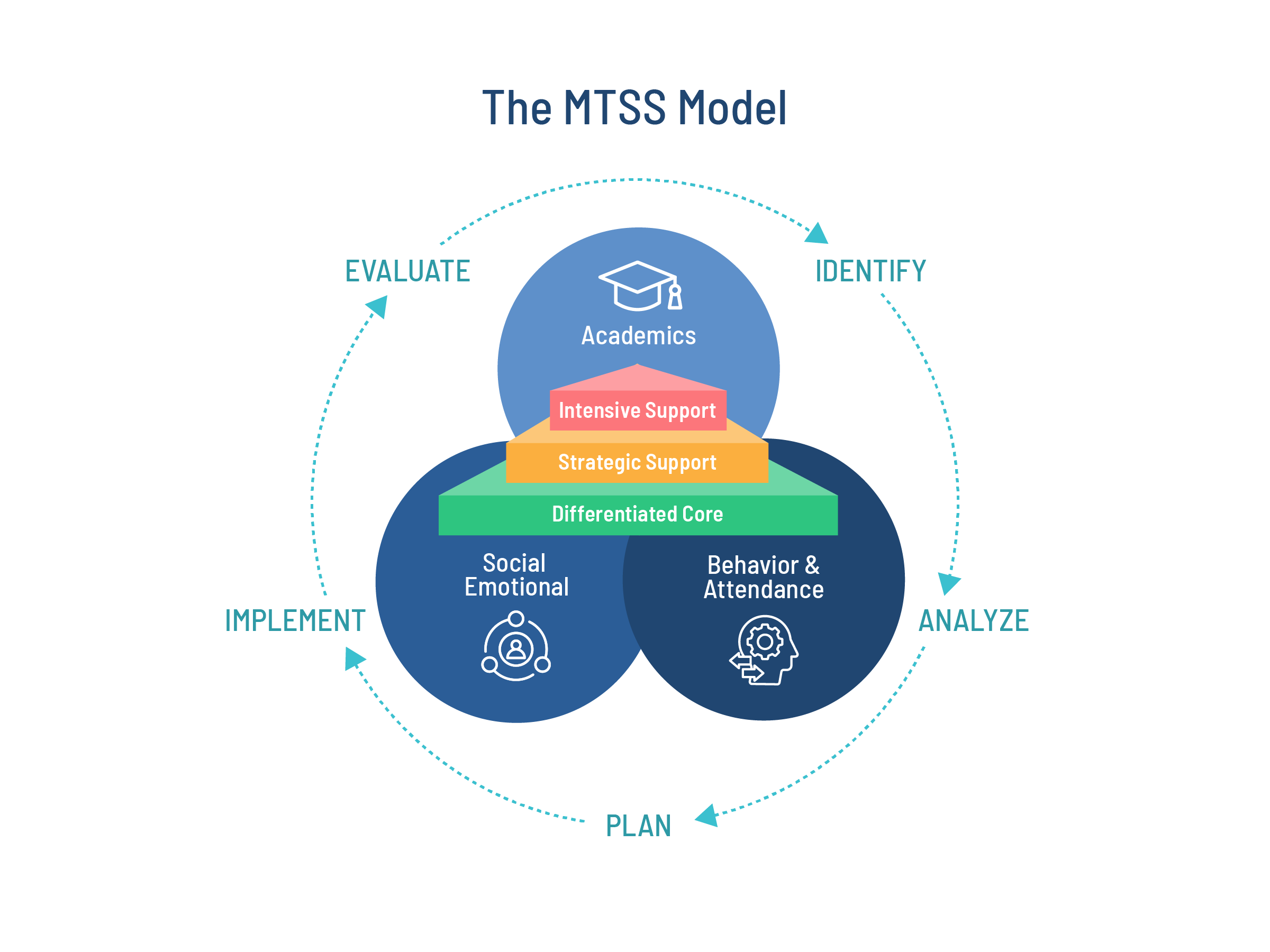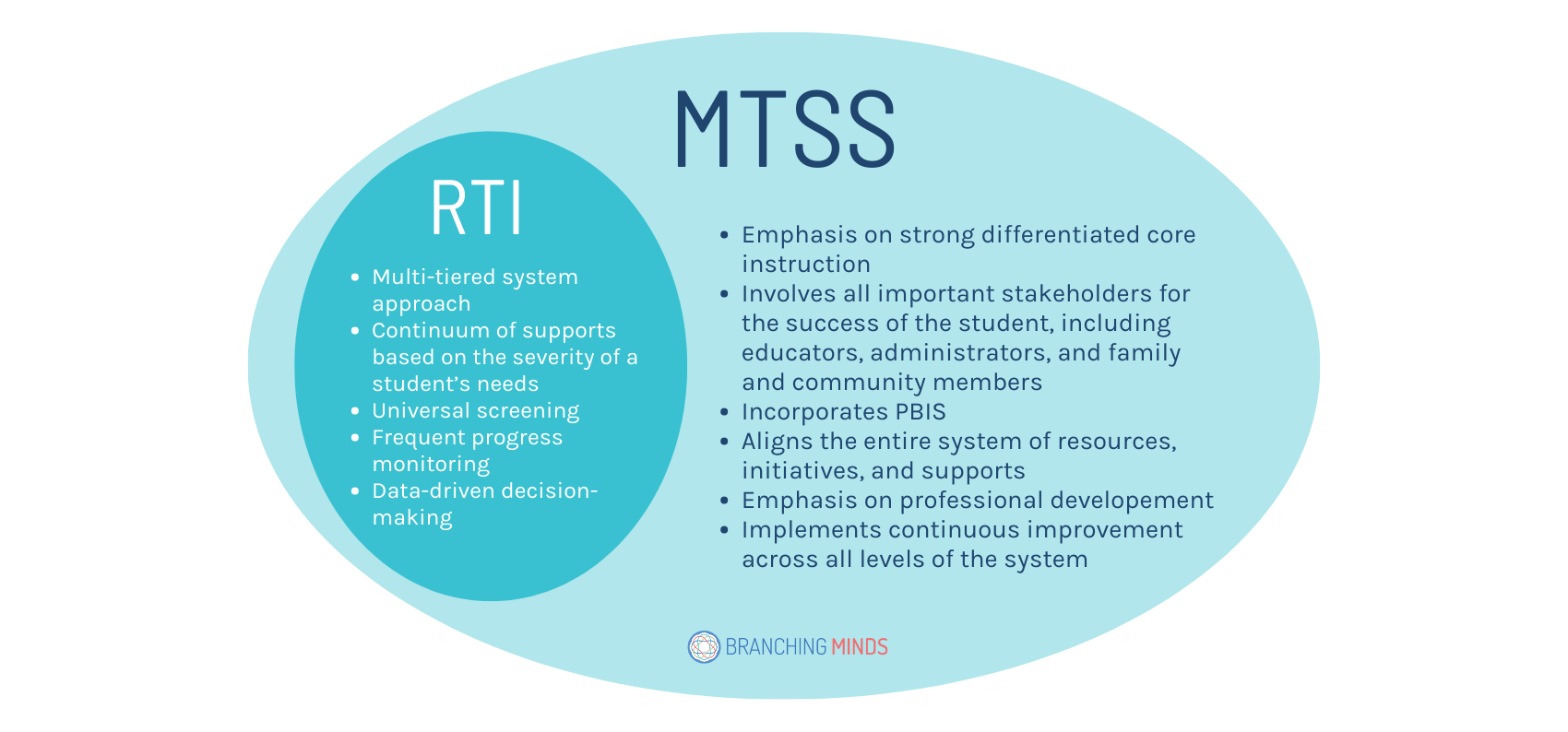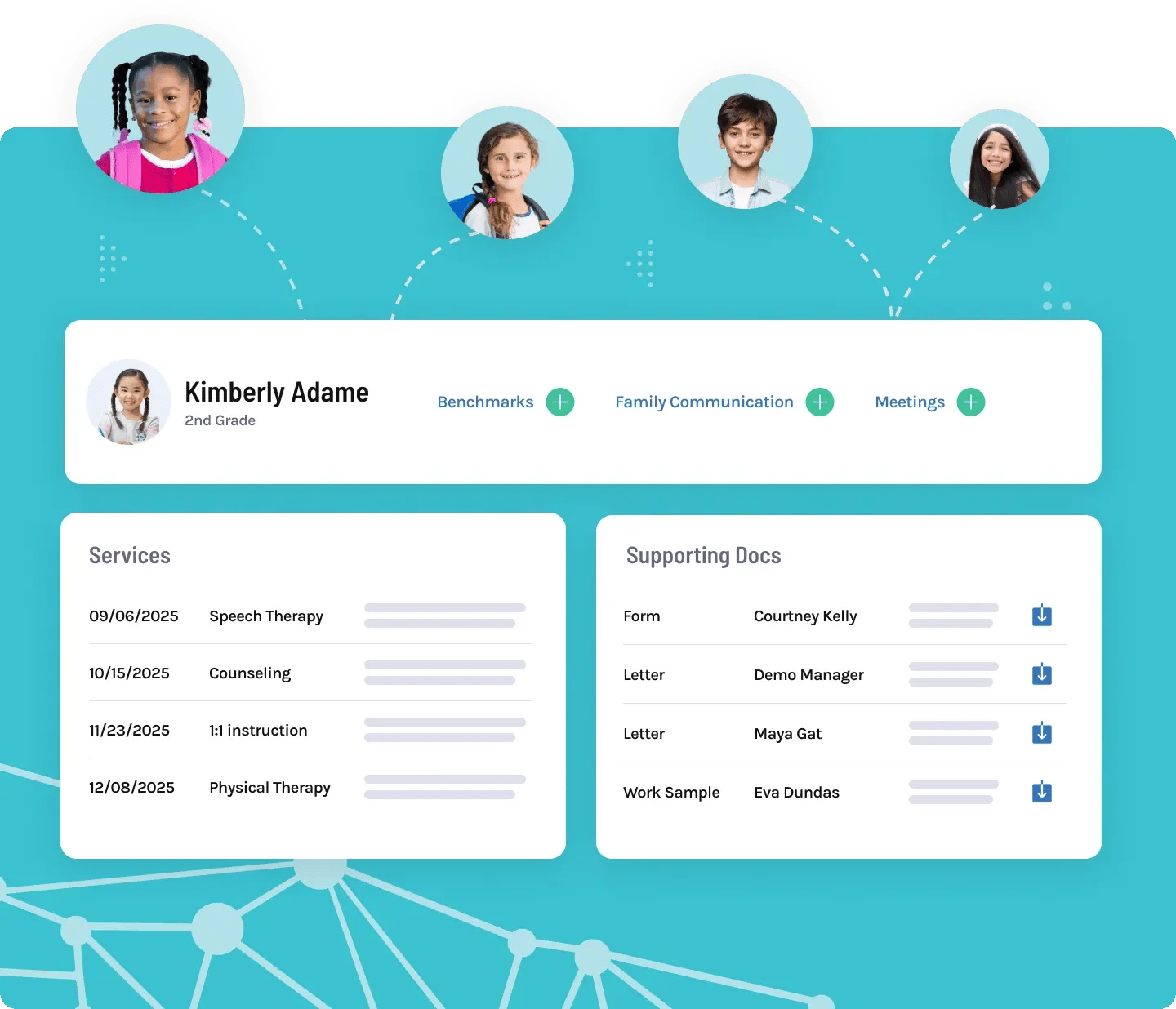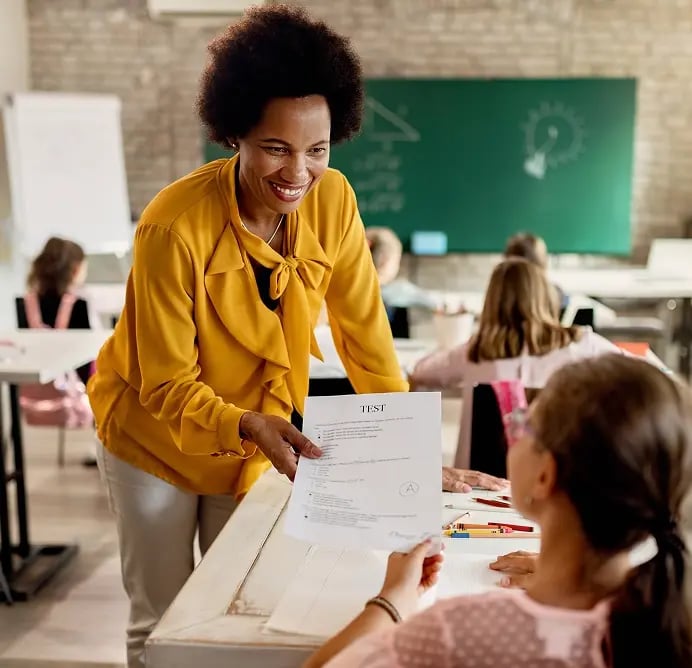MTSS vs. RTI
Response to Intervention (RTI) and Multi-Tiered System of Supports (MTSS) are both frameworks used to support student success. Both frameworks use evidence-based practices to provide research-based interventions for struggling students.
Response to Intervention (RTI) Defined
Response to Intervention (RTI) is a multi-tier approach to the early identification and support of students’ academic needs.
Multi-Tiered System of Supports (MTSS) Defined
A Multi-Tiered System of Supports (MTSS) is a collaborative, evidence-based approach to differentiating and personalizing instruction and intervention across academics, social-emotional learning, and behavior for all students—so that every student can achieve academic and life success.

The Difference Between RTI and MTSS
Historically, RTI has only focused on supporting the academic needs of struggling students. MTSS broadens that framework to support the whole student by supporting academic, SEL, behavior needs, and other topics that impact a student’s success in school.

The RTI/MTSS Pyramid
A three-tiered system of service delivery is a necessary structure to efficiently and effectively support all children, not just those who struggle in school. The three-tiered system of service delivery is crucial in the attempt to ensure all students achieve at high levels and all students achieve college and career readiness.
Using the MTSS Pyramid to Support Students Academically
Utilizing a Multi-Tiered System of Supports/Response to Intervention is ideal for supporting students in academics. With the practice of administering universal screeners and benchmark assessments, MTSS can help examine core instruction as well as make sure students have the support they need to master grade-level standards and continue making progress in their basic skills.
Tier 1: Core Instruction
Every student receives Tier 1 support, which is the core instruction. In order to support all students, core instruction should be high-quality, differentiated, standards-based, and use instructional strategies founded in research and evidence. “When all components are implemented, research shows results include strengthened Tier 1 instruction with 80% of students responding to core curriculum.” (source)
➡️ Learn more about Core Instruction in this Core Instruction Guide
Tier 2: Strategic Support
At Tier 2, students identified as being at-risk academically with a universal screener are provided with scientific, research-based target group interventions. These interventions are Tier 2 resources to help students achieve grade-level success. These interventions are meant to be strategic and efficient, mostly using small groups. They are monitored and documented on a weekly basis using progress monitoring tools. Tier 2 interventions are often implemented with small groups of students who are demonstrating common skill deficits.
Tier 3: Intensive Support
When students do not demonstrate progress with Tier 2 interventions and supports, they will require more intensive supports at the Tier 3 level. These intensive interventions would take place 1 on 1 with a teacher or smaller group support (3-5 students) and for longer periods of time. About 1-5% of students will require this level of support.
Using the MTSS Pyramid to Support Students in Behavior & Social-Emotional Learning (SEL)
MTSS is designed not just as a solution or strategy for academics but also for social-emotional learning and behavioral supports. The framework encompasses the whole individual student and applies the 3 tiers of high-quality support to these other areas as well.
PBIS as a Part of MTSS
The focus of the MTSS framework is on positive prevention and proactive learning, which could be supported by Positive Behavior Intervention and Supports or PBIS, which creates a positive support school climate aimed and reducing or eliminating poor behavior schoolwide through reinforcement and incentives of positive behaviors. (source)
PBIS is in itself a tiered system that combines behavioral support and SEL instruction, through school-wide expectations and positive recognition, instead of focusing on behavior consequences.
Tier 1: Core Instruction
Whether it be PBIS combined with other SEL programs, most students, or 80% of students will not need more than what Tier 1 core instruction offers. For PBIS this might look like establishing common behavioral expectations with a matrix—like how to line up, cafeteria expectations, and common hallway behavior. This could also mean social-emotional lessons given to all students during morning meetings or homeroom classes.
"In a school that is effectively implementing these school-wide supports, it is estimated that a majority of students (80-90%) will respond positively.” (source)
Tier 2: Strategic Support
5-15% of students might need more target support if they continue to show at-risk behaviors or need increased opportunities for instruction and feedback on school expectations. For example, a check-in check-out intervention is useful for students who need that extra adult time for their social-emotional and behavioral needs or even small group support to prevent the behavior from becoming a bigger problem.
Tier 3: Intensive Support
For those students who don’t respond to Tier 1 and Tier 2 supports, they will need more intensive interventions at Tier 3. This might include interventions from school counselors, psychologists, behavior specialists, or even outside services. This should be a small group of students 1-5% of students.

Where Can the MTSS Pyramid Model Be Used?
The MTSS pyramid model can be useful in academics, social-emotional learning, and behavior prevention. This model can be a framework within an individual school but can have a broader impact at the school district level. The MTSS pyramid not only impacts the classroom at the micro level but can influence the whole of a system at the macro level. It requires leadership at both levels, depending on a team and collaborative environment.
Why Is the MTSS Pyramid Model Essential?
The MTSS pyramid model is essential to providing the most equitable educational experience for students. Not only does it help schools examine the quality of their core instruction, but it utilizes the educators’ knowledge and expertise to understand learners and make data-informed decisions about what supports are needed. It is collaborative and impacts all aspects of the structure of a school and district. MTSS levels the playing field for all learners and allows schools to improve the learning process for all.
FAQs About MTSS
What is an MTSS Framework?
An MTSS framework is a collaborative, evidence-based approach to differentiating and personalized learning instruction and intervention for all students through academics, social-emotional learning, and behavior.
What is the Goal of the MTSS Triangle?
The goal of the MTSS triangle is to be able to provide high-quality instruction to all, but also provide targeted support and intensive interventions for those students that need it most.
What are the 3 Tiers of MTSS?
The 3 tiers of MTSS are Tier 1 (core instruction), Tier 2 (targeted support), and Tier 3 (intensive intervention).
How re Students Identified for an MTSS Intervention?
Students are identified for an MTSS intervention by using a universal screener, such as a nationally normed assessment or SEL screener. Using a diagnostic assessment will narrow down the exact intervention needed.
What is Early MTSS?
Early MTSS is a pyramid framework for evidence-based instruction and practice for developing a young child’s social and emotional development. This is guidance for early educators, parents, and early interventionists. This model is built on the foundation of nurturing and Responsive Relationships and High-Quality Supportive Environments. (source)
Additional resources you may find helpful:
About the author
Branching Minds
Branching Minds is a highly respected K-12 services and technology company that leverages the learning sciences and technology to help districts effectively personalize learning through enhancements to their MTSS/RTI practice. Having worked with hundreds of districts across the country, we bring deep expertise in learning sciences, data management and analysis, software design, coaching, and collaboration. Combined with our extensive toolkit of resources, PD, and technology, we provide a system-level solution. We are more than a service or a software provider, we are partners who will deliver sustainable results for educators, and a path to success for every learner.

MTSS Shouldn't Be So Hard
Empower your team with actionable insights that drive success for your students, staff, and school(s).















.png?width=716&height=522&name=Tier%203%20Behavior%20Support%20Planning%20(preview).png)

.png?width=716&height=522&name=Behavior%20Progress%20Monitoring%20(Preview).png)